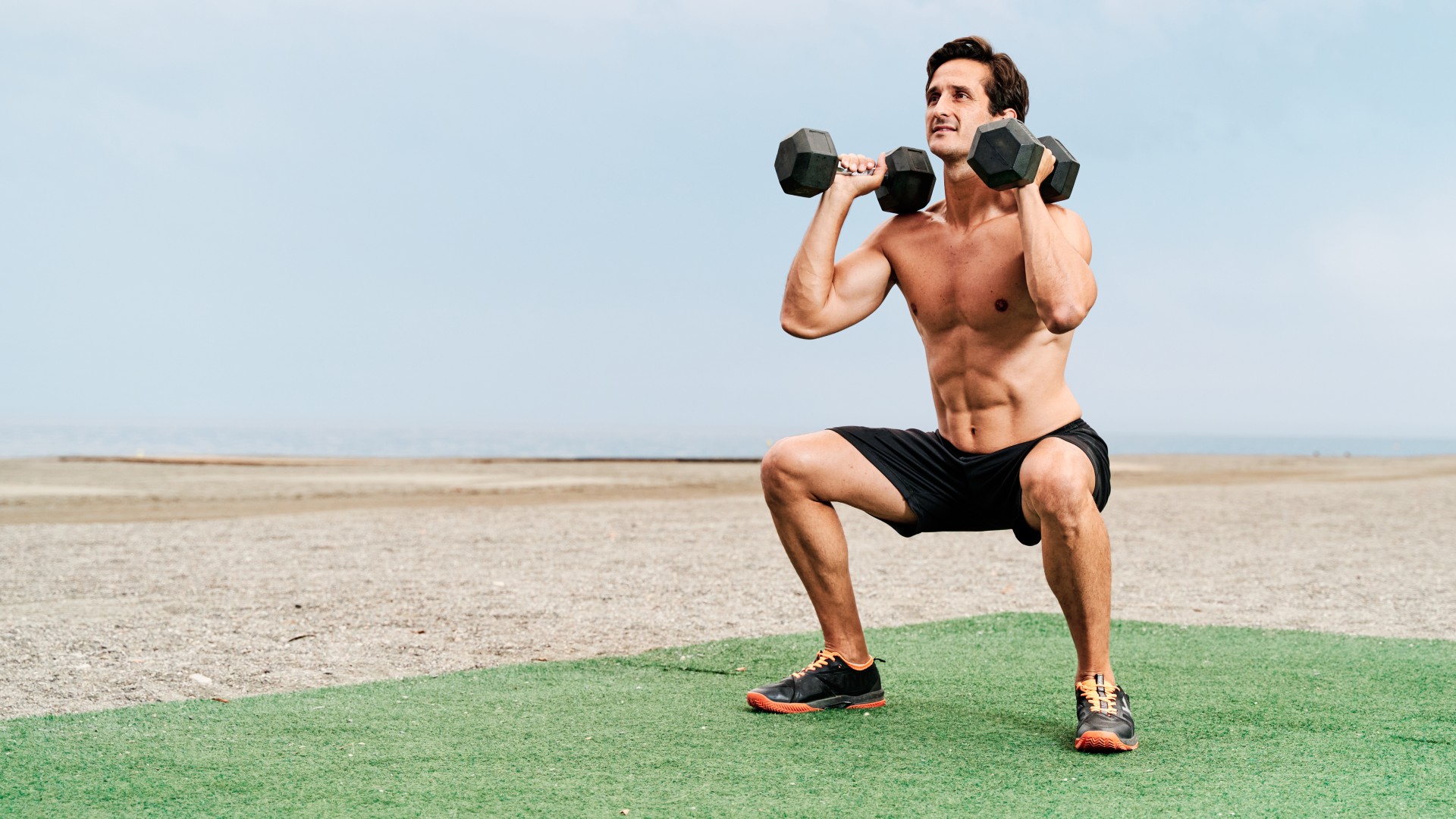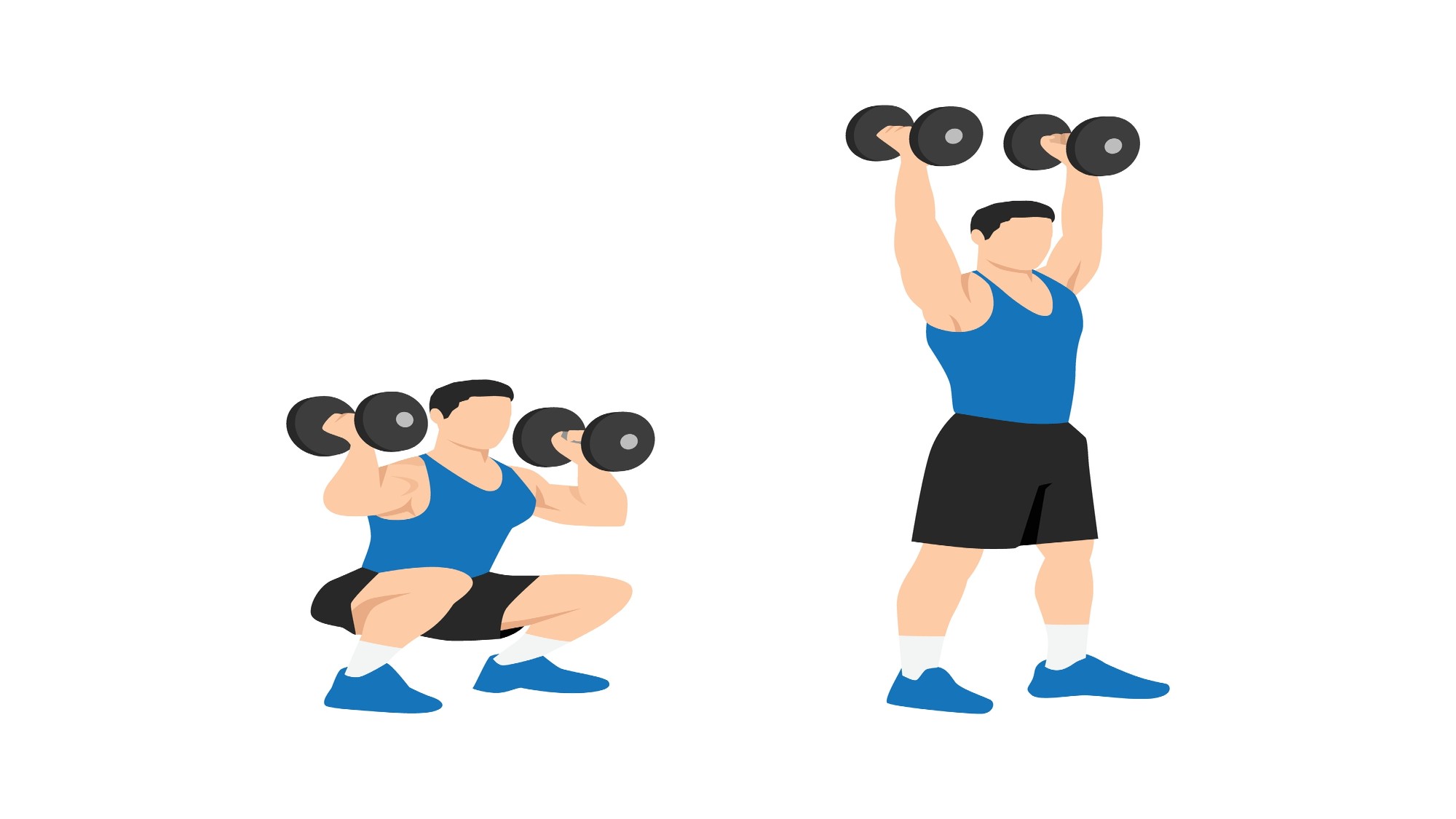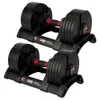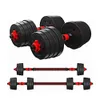
This full-body dumbbell exercise ticks the boxes for building stronger muscles, sending a burn through your entire body, and developing core stability and balance — it’s the dumbbell thruster.
Anytime this beast crops up during the best CrossFit workouts or anywhere else for that matter, it still gets a groan from me. But funnily enough, it’s one of my favorite dumbbell exercises to program. That’s because it’s an effective and efficient strength and conditioning tool — it hits every major muscle group, sends your heart rate soaring and burns calories. You can go heavy using barbells to prioritize strength training principles or lift light for endurance muscle conditioning.
Ready to give it a try? Here’s how to do the dumbbell thruster, the benefits and variations to spice up your workouts.
Benefits of thrusters
The thruster is a compound exercise found in functional training. It targets various muscle groups and joints and mimics the natural movement patterns you’d find in daily life. Thrusters combine a squat and overhead press while challenging your core muscles to help stabilize your trunk as you lower down, then powerfully drive your ‘bells upward overhead.
Barbell thrusters are beneficial for loading much heavier than dumbbells but also increase the likelihood that your dominant side will take over and leave your weaker side not activating properly. For this reason, dumbbells are better at ironing out those potential imbalances, plus they’re more accessible for most people — especially if you’re unable to lift a barbell overhead.
Over time, thrusters develop power, endurance and strength, especially if you load with barbells for strength adaptations. To begin with, I recommend using light weights, then add weights as you get stronger; you can’t protect your lower back if your muscles aren’t recruiting how they should.
How to do dumbbell thrusters

For the dumbbell thruster, I recommend a set of the best adjustable dumbbells. Hex dumbbells provide more stability on the floor, but a dependable set of adjustable dumbbells help you scale quickly during workouts if you program thrusters alongside other exercises.
Sign up to get the BEST of Tom's Guide direct to your inbox.
Get instant access to breaking news, the hottest reviews, great deals and helpful tips.
- Start with feet hip or shoulder-width apart and rack your dumbbells onto your shoulders with both elbows slightly forward. Brace your core.
- Perform a squat, lowering until your thighs sit parallel to the floor, and keep your spine neutral and chest forward.
- Push your knees outward in line with your toes and keep the weight mid-foot to heel.
- Drive upward to stand and extend your hips as you press your dumbbells overhead.
- Push your head slightly through your arms and lock out at the top, contracting your body and keeping your biceps close to your ears.
- Begin to bend your knees and elbows as you lower your weights back to your shoulders with control and lower back into a squat with both weights racked.
- Keep the elbows lifted as you lower to catch the weights onto your shoulders.
In the overhead position, keep your back straight and avoid leaning forward, sending your arms wide, or extending into your lower back. The thruster requires existing shoulder flexibility and strength to shelve the weights overhead and control them back to your shoulders.
As well as trying barbell thrusters (during this variation, you’ll punch your head through and under the bar for extra stability in the overhead position), you could try single-arm thrusters if you want to benefit from unilateral exercise and hone in on one side of the body at a time or get used to the movement pattern with a lighter weight.
Thruster workout to try:
To get the most out of thrusters, include them as part of your workout programs. If your goal includes lifting at or close to your one-rep max, consider programming them as a standalone exercise and aim for 3-5 sets of 2-6 reps using a heavy set of weights.
If you’re adding thrusters into a workout, ditch the dumbbells for a moment — you only need one kettlebell and this 10-minute finisher to build a strong core and burn calories. Spoiler, thrusters are non-optional.
More from Tom's Guide
- 5 best ways to build muscle without lifting heavier weights
- I'm a personal trainer and this is the most underrated gym equipment for building strength
- Forget Russian twists, I did Russian push-ups every day for a week, here's what happened

Sam Hopes is a level 3 qualified trainer, level 2 reiki practitioner and senior fitness writer at Tom's Guide. She is also currently undertaking her Yoga For Athletes training course. Sam has written for various fitness brands and websites over the years and has experience across brands at Future such as Live Science, Fit&Well, Coach, and T3.
Having worked with fitness studios like F45 and Virgin Active, Sam now primarily teaches outdoor bootcamps, bodyweight, calisthenics and kettlebells. She also coaches mobility and stretching-focused classes several times a week and believes that true strength comes from a holistic approach to training your body.
Sam has completed two mixed doubles Hyrox competitions in London and the Netherlands and finished her first doubles attempt in 1:11.
-
daveandcj2007 These will not build any appreciable strength. You cannot load them with enough weight to drive a physiological strength adaptation. While they may be good for muscular endurance and cardio, they are not good for building strength.Reply



